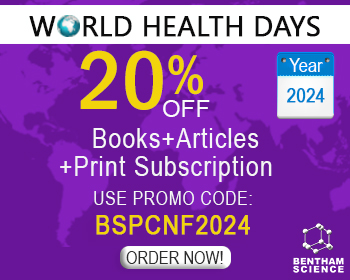Abstract
The hypothalamic-pituitary axis is responsible for the neuroendocrine control of several organ systems. The anterior pituitary directly affects the functions of the thyroid gland, the adrenal glands, and gonads, and regulates growth and milk production. The posterior hypophysis, through nerve connections with the hypothalamic nuclei, releases vasopressin and oxytocin responsible for water balance and social bonding, sexual reproduction and childbirth, respectively. Pituitary gland hormonal excess or deficiency results in dysregulation of metabolic pathways and mechanisms that are important for the homeostasis of the organism and are associated with increased morbidity and mortality. Cardiovascular (CV) disorders are common in pituitary disease and have a significant impact on survival. Hormonal imbalance is associated with CV complications either through direct effects on the heart structure and function and vasculature or indirectly by altering the metabolic profile. Optimal endocrine control can prevent or reverse CV defects and preserve survival and quality of life. In this review, we discuss the effects of pituitary hormone excess and deficiency on the CV system. Specifically, we assess the impact of Somatotroph, Corticotroph, Gonadotroph, and Lactotroph anterior pituitary axes on the CV system. The effect of posterior pituitary function on the CV system is also explored.
Keywords: Pituitary, pituitary hormone excess, hypopituitarism, posterior pituitary, cardiovascular disease, cardiovascular disorders.
[http://dx.doi.org/10.1016/j.yfrne.2019.100748] [PMID: 31059719]
[http://dx.doi.org/10.1016/j.peptides.2019.05.001] [PMID: 31112739]
[http://dx.doi.org/10.1016/j.otc.2015.09.002] [PMID: 26614827]
[http://dx.doi.org/10.1056/NEJMra062453] [PMID: 17167139]
[http://dx.doi.org/10.1007/s11102-017-0797-7] [PMID: 28224405]
[http://dx.doi.org/10.1016/j.hfc.2019.03.001] [PMID: 31079698]
[http://dx.doi.org/10.1007/s12020-016-1191-3] [PMID: 28042644]
[http://dx.doi.org/10.1046/j.1365-2265.2001.01218.x] [PMID: 11207626]
[http://dx.doi.org/10.1210/jc.2002-021099] [PMID: 12843165]
[http://dx.doi.org/10.1210/jc.2003-030849] [PMID: 14715829]
[http://dx.doi.org/10.1210/jc.2006-2547] [PMID: 17311857]
[http://dx.doi.org/10.1530/EJE-08-0138] [PMID: 18495693]
[http://dx.doi.org/10.1530/EJE-09-0945] [PMID: 20145047]
[http://dx.doi.org/10.1210/jc.2009-2570] [PMID: 20463098]
[http://dx.doi.org/10.1042/CS20050281] [PMID: 16185195]
[PMID: 23093460]
[http://dx.doi.org/10.1358/mf.2009.31.7.1415895] [PMID: 19907721]
[http://dx.doi.org/10.2174/157340309788970306] [PMID: 20676279]
[http://dx.doi.org/10.1111/j.1742-1241.2011.02682.x] [PMID: 21679284]
[http://dx.doi.org/10.1007/s00125-016-4159-1] [PMID: 27933336]
[http://dx.doi.org/10.1210/jc.2009-1912] [PMID: 20061419]
[http://dx.doi.org/10.1007/s12020-014-0327-6] [PMID: 24972804]
[http://dx.doi.org/10.1210/er.2002-0022] [PMID: 14769829]
[http://dx.doi.org/10.1016/j.ijcard.2012.11.109] [PMID: 23219077]
[http://dx.doi.org/10.1530/EJE-16-0562] [PMID: 27528501]
[http://dx.doi.org/10.1046/j.1365-2265.2000.00986.x] [PMID: 10792333]
[http://dx.doi.org/10.1210/er.2008-0027] [PMID: 19240267]
[http://dx.doi.org/10.1159/000430819] [PMID: 25925240]
[http://dx.doi.org/10.1002/edm2.90] [PMID: 31592448]
[http://dx.doi.org/10.1016/j.metabol.2017.02.014] [PMID: 28521870]
[http://dx.doi.org/10.1172/JCI39375] [PMID: 19884662]
[http://dx.doi.org/10.1007/s11102-016-0725-2] [PMID: 27279011]
[http://dx.doi.org/10.1038/s41572-019-0071-6] [PMID: 30899019]
[http://dx.doi.org/10.1111/cen.13498] [PMID: 29044586]
[http://dx.doi.org/10.1159/000362550] [PMID: 24861467]
[http://dx.doi.org/10.1093/eurheartj/ehs233] [PMID: 22843444]
[http://dx.doi.org/10.3390/jcm8122203] [PMID: 31847209]
[http://dx.doi.org/10.1097/HJH.0b013e328339f254] [PMID: 20453663]
[http://dx.doi.org/10.1038/oby.2010.150] [PMID: 20559294]
[http://dx.doi.org/10.1007/978-3-319-12114-7_1] [PMID: 25472532]
[http://dx.doi.org/10.1016/j.biochi.2013.09.023] [PMID: 24120689]
[PMID: 20039901]
[http://dx.doi.org/10.1159/000357810] [PMID: 24355865]
[http://dx.doi.org/10.1159/000486000] [PMID: 29894997]
[http://dx.doi.org/10.1210/jc.2008-0125] [PMID: 18334580]
[http://dx.doi.org/10.1016/S0140-6736(14)61375-1] [PMID: 26004339]
[http://dx.doi.org/10.1210/jc.2010-1942] [PMID: 21193542]
[http://dx.doi.org/10.1016/j.ecl.2005.01.010] [PMID: 15850845]
[http://dx.doi.org/10.1111/j.1365-2265.2010.03829.x] [PMID: 20550536]
[http://dx.doi.org/10.1016/j.jsbmb.2010.02.024] [PMID: 20206259]
[http://dx.doi.org/10.1159/000314319] [PMID: 20829623]
[http://dx.doi.org/10.1210/jc.2009-0766] [PMID: 19509101]
[http://dx.doi.org/10.1159/000314316] [PMID: 20829624]
[http://dx.doi.org/10.1016/j.ecl.2007.10.010] [PMID: 18226734]
[http://dx.doi.org/10.1210/jc.2009-1326] [PMID: 19897679]
[http://dx.doi.org/10.1159/000318566] [PMID: 20829618]
[http://dx.doi.org/10.1159/000314213] [PMID: 20829625]
[http://dx.doi.org/10.1097/HJH.0000000000000415] [PMID: 25415766]
[http://dx.doi.org/10.1055/s-2007-992813]
[http://dx.doi.org/10.1161/01.HYP.26.6.1003]
[http://dx.doi.org/10.1016/j.ecl.2019.08.005] [PMID: 31655772]
[http://dx.doi.org/10.1210/jc.86.1.117] [PMID: 11231987]
[http://dx.doi.org/10.1210/jc.2002-021558] [PMID: 12788849]
[http://dx.doi.org/10.1007/s12020-012-9764-2] [PMID: 22851333]
[http://dx.doi.org/10.1016/S0140-6736(06)68699-6] [PMID: 16698415]
[http://dx.doi.org/10.1111/j.1365-2265.2011.04206.x] [PMID: 21854405]
[http://dx.doi.org/10.1530/EJE-09-0621] [PMID: 19933822]
[http://dx.doi.org/10.1210/jc.2014-1783] [PMID: 25093618]
[http://dx.doi.org/10.1210/jc.2003-030871] [PMID: 14671138]
[http://dx.doi.org/10.1210/jc.2009-0290] [PMID: 19454584]
[http://dx.doi.org/10.1210/jc.2004-0079] [PMID: 15292300]
[PMID: 10443657]
[http://dx.doi.org/10.1530/EJE-14-0556] [PMID: 25722097]
[http://dx.doi.org/10.1046/j.1365-2265.2001.01406.x] [PMID: 11895214]
[http://dx.doi.org/10.1016/S0140-6736(16)30053-8] [PMID: 27041067]
[http://dx.doi.org/10.1111/cen.13141] [PMID: 27327840]
[http://dx.doi.org/10.1046/j.1365-2265.1997.d01-1749.x] [PMID: 9059561]
[http://dx.doi.org/10.1016/j.ecl.2016.01.005] [PMID: 27241971]
[http://dx.doi.org/10.1007/s11102-010-0250-7] [PMID: 20730514]
[http://dx.doi.org/10.1111/j.1365-2265.2005.02283.x] [PMID: 15943833]
[http://dx.doi.org/10.1530/eje.0.1410481] [PMID: 10576764]
[http://dx.doi.org/10.1210/jc.2004-1042] [PMID: 15579750]
[http://dx.doi.org/10.1111/j.1365-2362.2005.01474.x] [PMID: 15733076]
[http://dx.doi.org/10.1210/jc.2007-2810] [PMID: 18593773]
[http://dx.doi.org/10.1016/j.amjcard.2012.07.007] [PMID: 22906895]
[http://dx.doi.org/10.1007/s12020-011-9544-4] [PMID: 21986921]
[http://dx.doi.org/10.1210/jc.2007-2188] [PMID: 18334583]
[http://dx.doi.org/10.1016/j.ghir.2011.12.001] [PMID: 22226996]
[http://dx.doi.org/10.1586/erc.12.74] [PMID: 22908926]
[http://dx.doi.org/10.1530/eje.1.02179] [PMID: 16793953]
[http://dx.doi.org/10.1210/jc.2014-3787] [PMID: 25658016]
[http://dx.doi.org/10.1159/000438841] [PMID: 26680571]
[http://dx.doi.org/10.1016/j.beem.2019.101316] [PMID: 31522908]
[http://dx.doi.org/10.1007/s12020-016-1159-3] [PMID: 27817141]
[http://dx.doi.org/10.1016/S0140-6736(00)04006-X] [PMID: 11273062]
[http://dx.doi.org/10.1161/CIRCULATIONAHA.109.192695] [PMID: 20124128]
[http://dx.doi.org/10.1097/gme.0b013e31822a9937] [PMID: 21993082]
[http://dx.doi.org/10.1097/gme.0b013e31818888f7] [PMID: 19034050]
[http://dx.doi.org/10.1210/jc.2007-0454] [PMID: 17726076]
[http://dx.doi.org/10.1007/s10741-015-9515-6] [PMID: 26542377]
[http://dx.doi.org/10.1210/jc.2014-3934] [PMID: 25584720]
[http://dx.doi.org/10.1111/cen.12997] [PMID: 26663365]
[http://dx.doi.org/10.1210/jc.2011-1137] [PMID: 21816776]
[http://dx.doi.org/10.1161/CIRCULATIONAHA.107.719005] [PMID: 18040028]
[http://dx.doi.org/10.1111/j.1743-6109.2009.01576.x] [PMID: 19912508]
[http://dx.doi.org/10.2337/dc06-1579] [PMID: 17259487]
[http://dx.doi.org/10.2337/diacare.27.5.1036] [PMID: 15111517]
[http://dx.doi.org/10.1210/jc.2005-1326] [PMID: 16394089]
[http://dx.doi.org/10.1210/jc.2009-1097] [PMID: 19808848]
[http://dx.doi.org/10.1210/jc.2012-2432] [PMID: 22872686]
[http://dx.doi.org/10.1007/s13679-019-00355-z] [PMID: 31240613]
[http://dx.doi.org/10.1016/j.jdiacomp.2016.07.017] [PMID: 27497684]
[http://dx.doi.org/10.3945/ajcn.2008.26382] [PMID: 19056558]
[http://dx.doi.org/10.1093/eurheartj/ehp098] [PMID: 19346228]
[http://dx.doi.org/10.1016/j.ijcard.2005.01.043] [PMID: 16321691]
[http://dx.doi.org/10.1016/j.lfs.2007.05.018] [PMID: 17604059]
[http://dx.doi.org/10.1016/j.ijcard.2012.12.039] [PMID: 23298558]
[http://dx.doi.org/10.1046/j.1365-2265.2001.01207.x] [PMID: 11167932]
[http://dx.doi.org/10.1073/pnas.95.24.14558] [PMID: 9826739]
[http://dx.doi.org/10.2174/1570159X11311020008] [PMID: 23997756]
[http://dx.doi.org/10.1111/jne.12268] [PMID: 25702774]
[http://dx.doi.org/10.1073/pnas.94.21.11704] [PMID: 9326674]



























